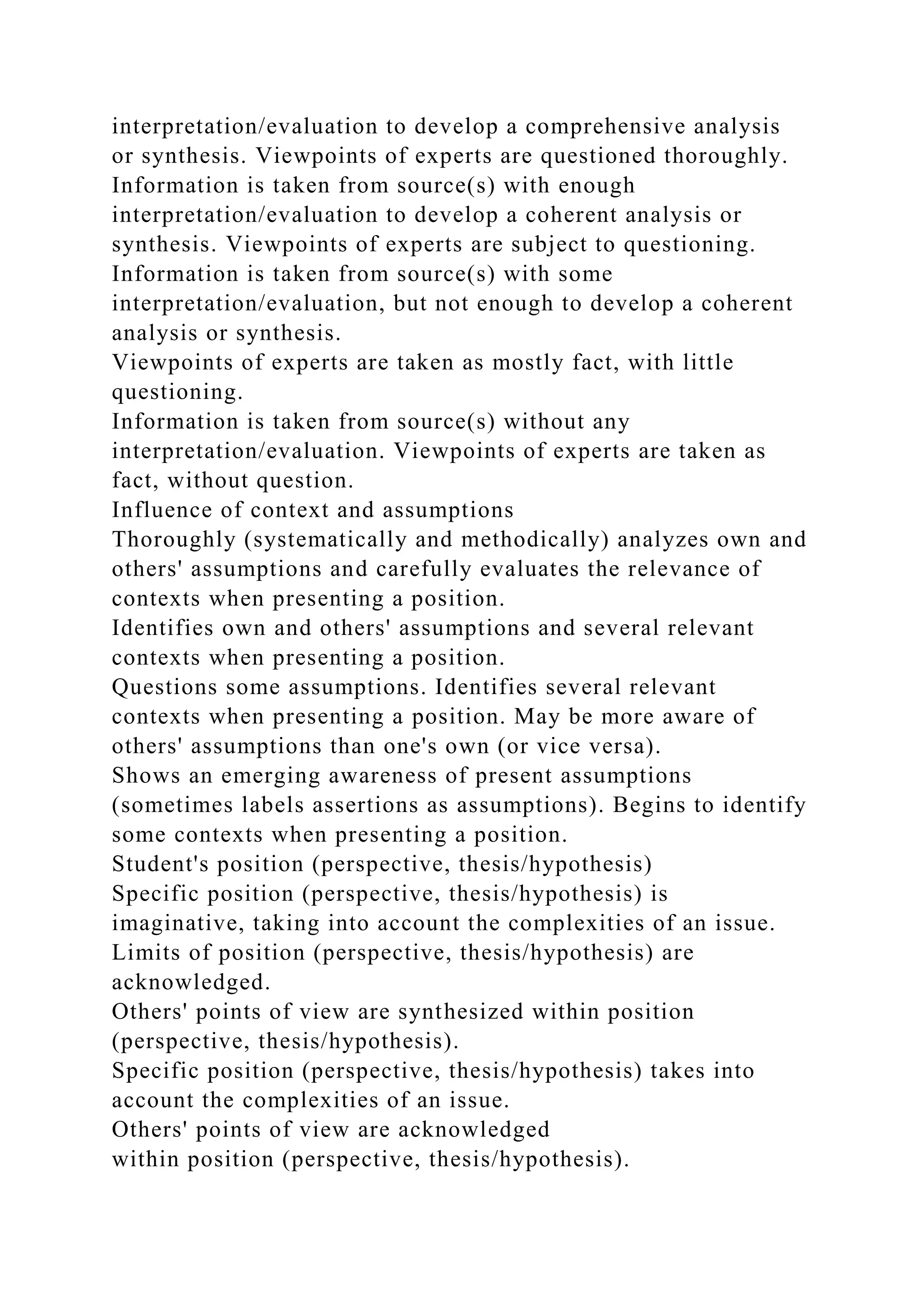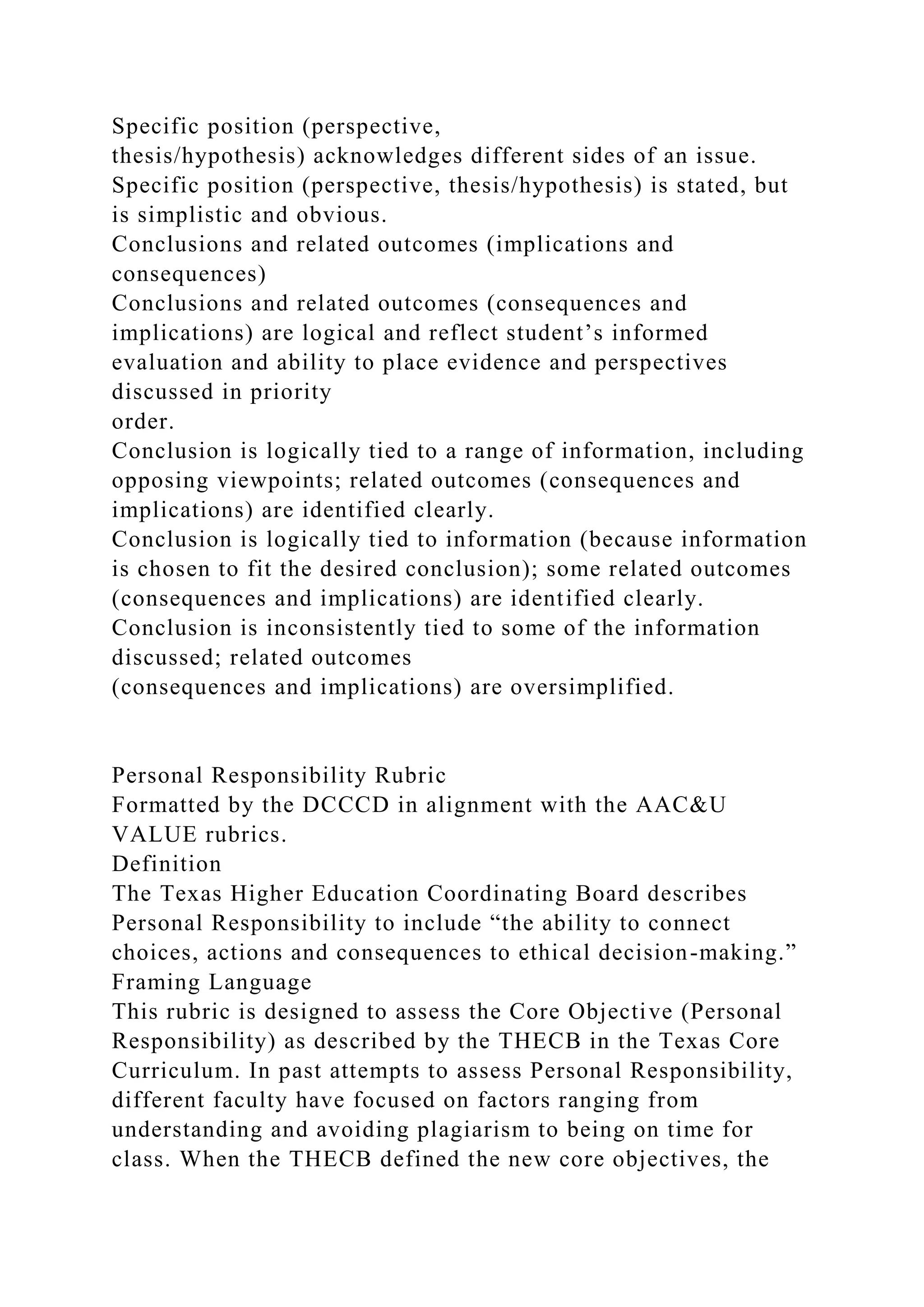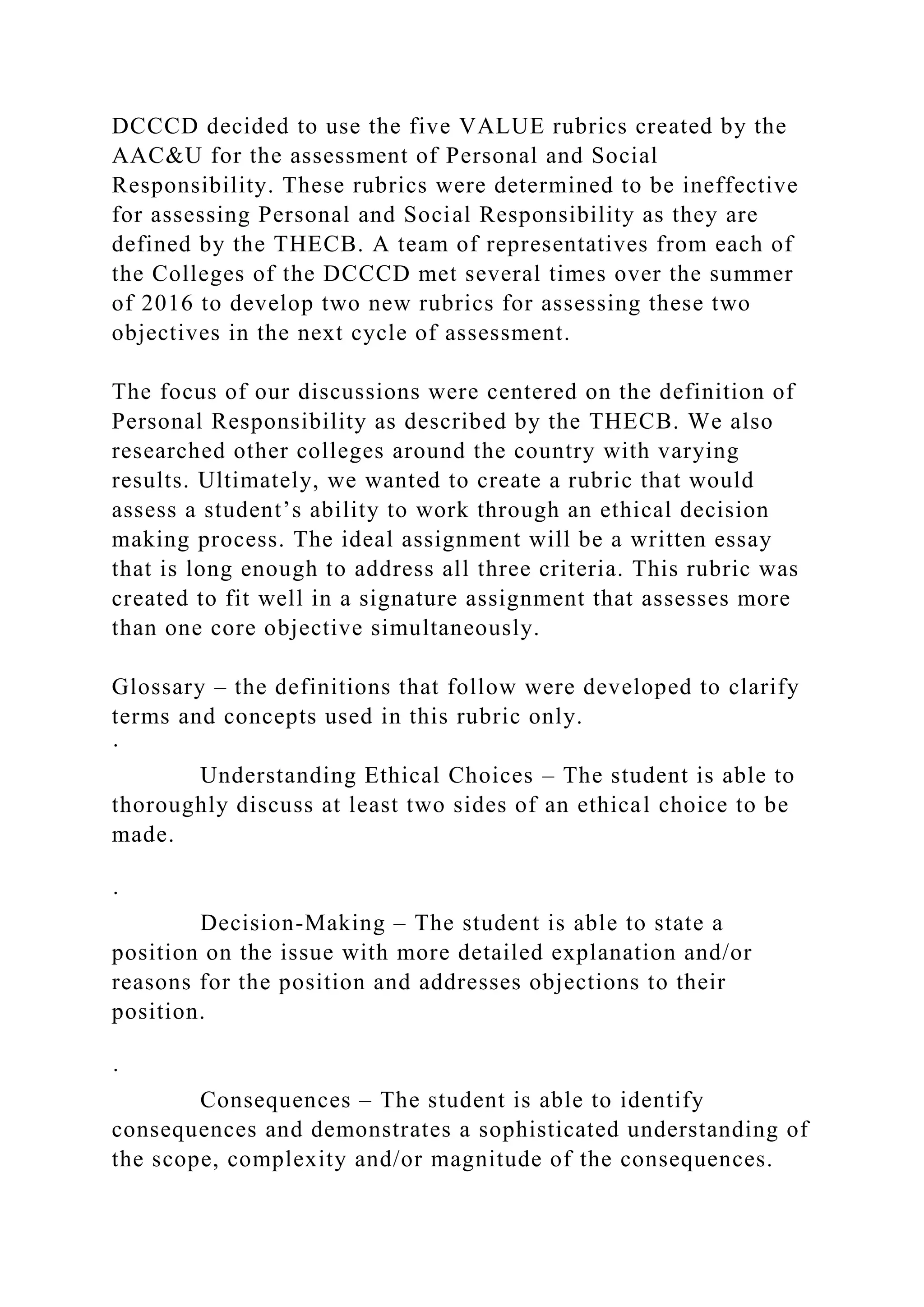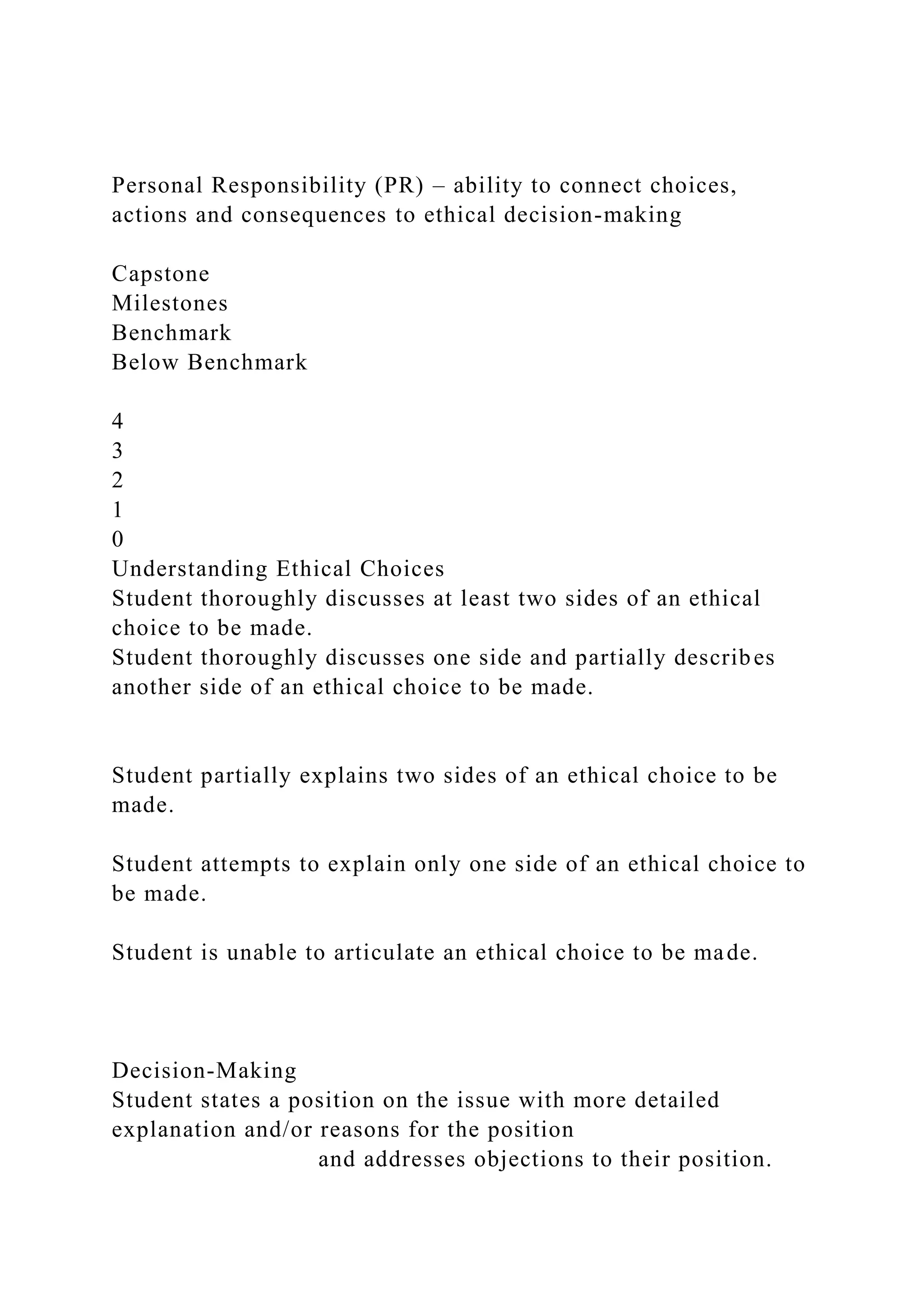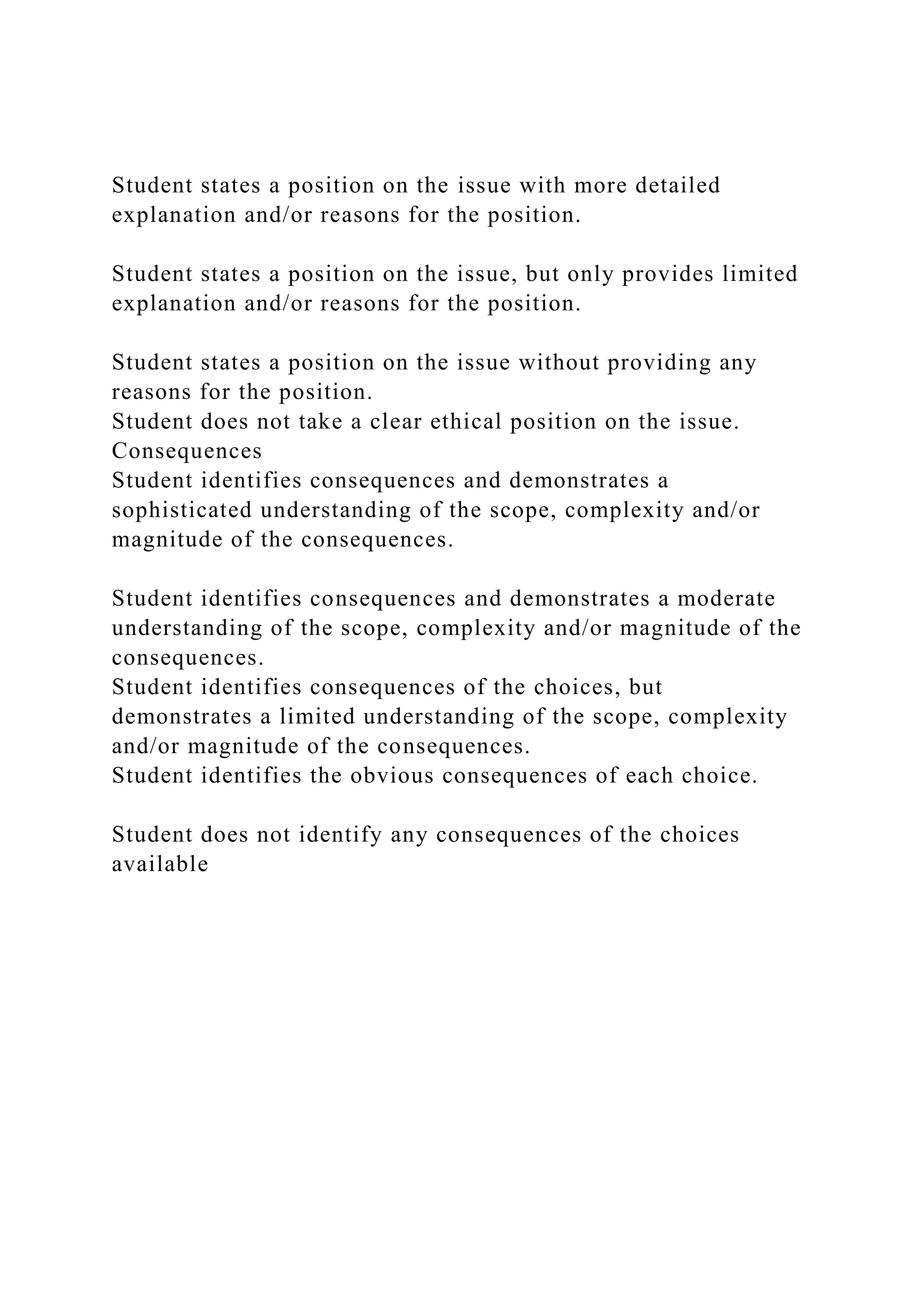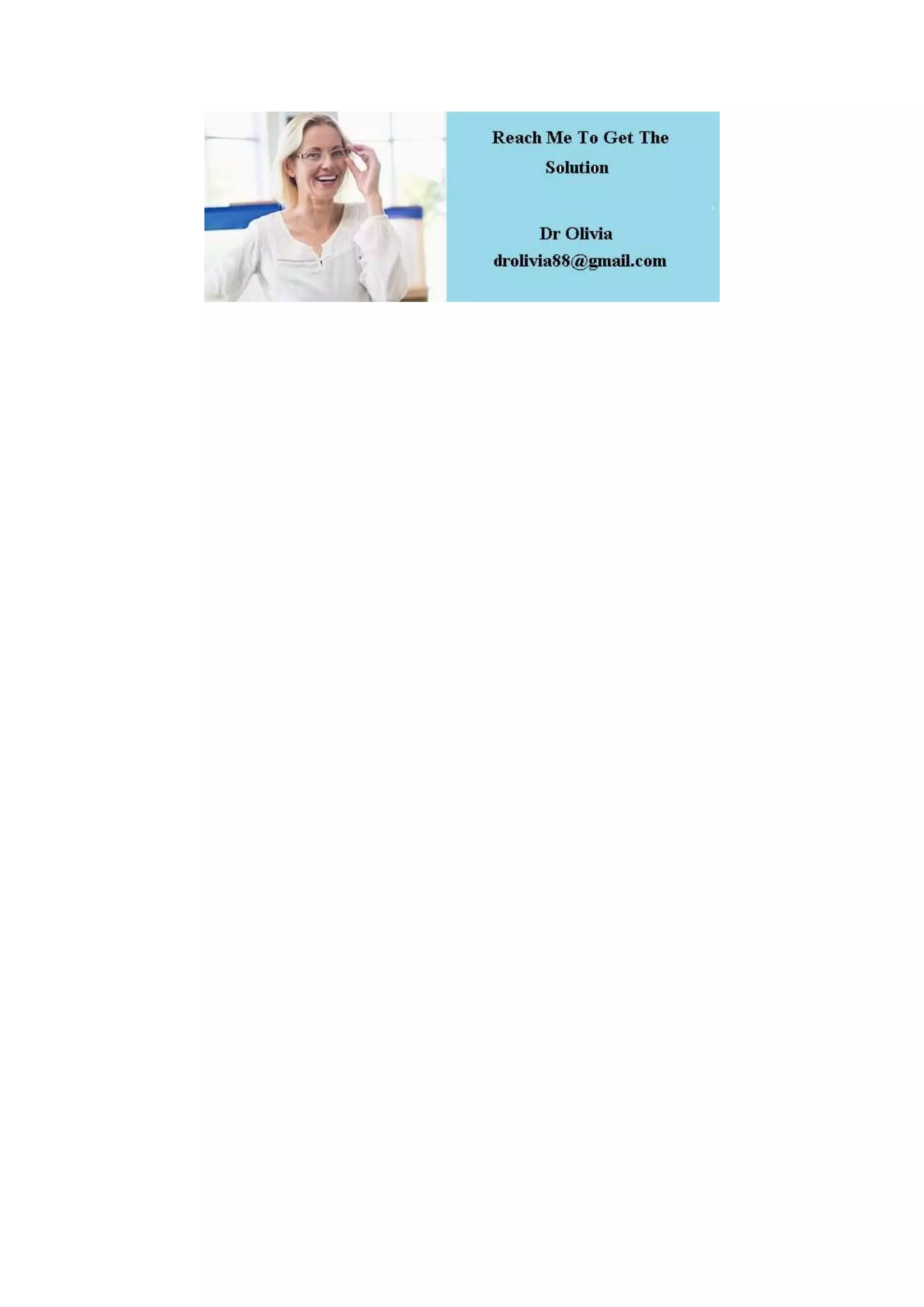The document provides a comprehensive guide for writing a 1000-1500 word argumentative essay on whether putting oneself first is a beneficial approach to life, detailing steps for brainstorming, constructing a thesis, and supporting arguments. It emphasizes the importance of critical thinking and personal responsibility, with rubrics for grading based on the depth of analysis and understanding of ethical choices and consequences. Additional resources and citation guidelines are also mentioned to support effective research and argument development.

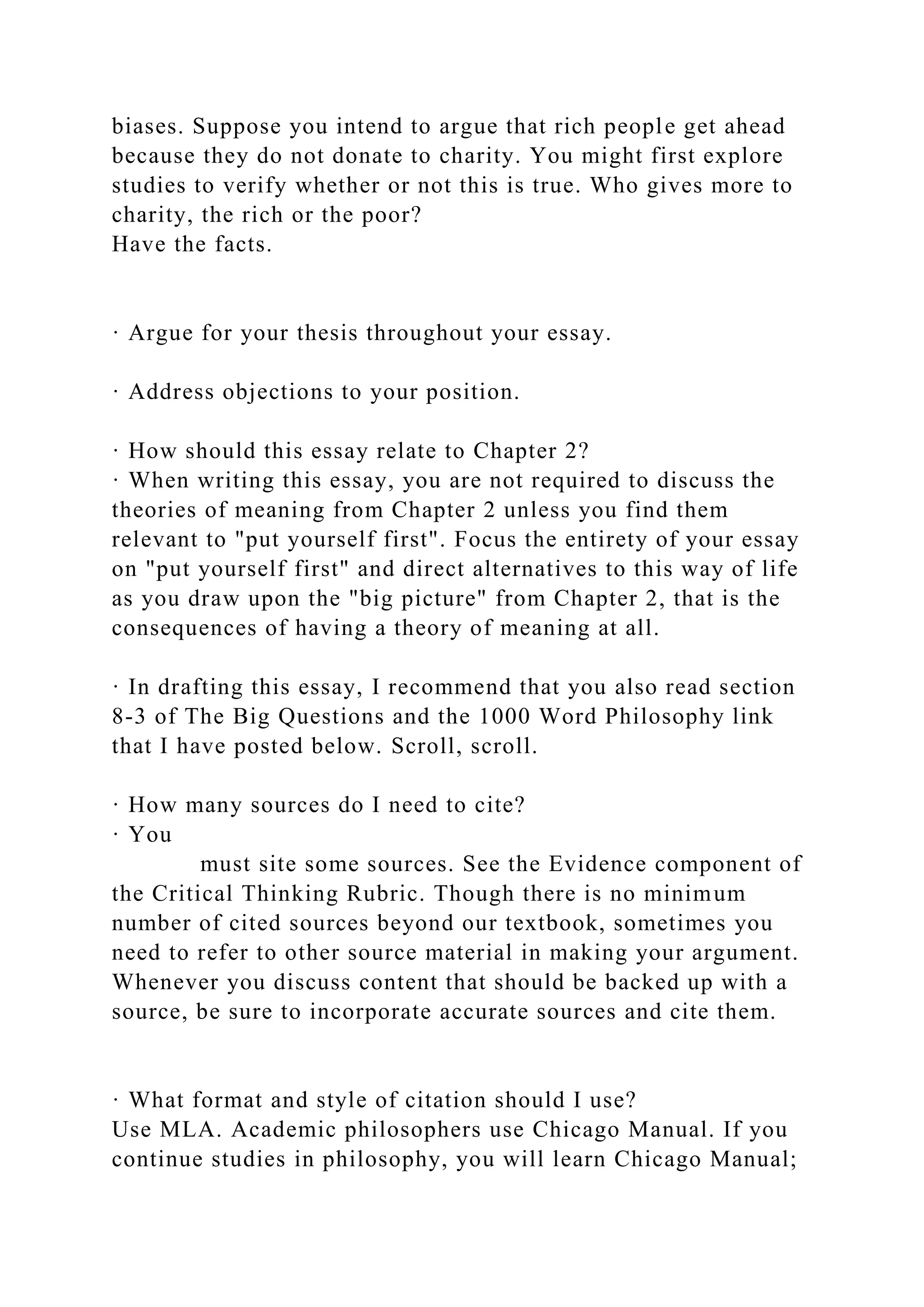
![however, for most introductory students, it is not practical to
learn it. MLA is fine for the purposes of this course
· Do I need to meet the minimum word count?
Yes. Points will be deducted for essays under 1000 words in
proportion to how far the word count falls short of this
minimum requirement.
CRITICAL THINKING VALUE RUBRIC
for more information, please contact [email protected]
The VALUE rubrics were developed by teams of faculty experts
representing colleges and universities across the United States
through a process that examined many existing campus rubrics
and related documents for each learning outcome and
incorporated additional feedback from faculty. The rubrics
articulate fundamental criteria for each learning outcome, with
performance descriptors demonstrating progressively more
sophisticated levels of attainment. The rubrics are intended for
institutional-level use in evaluating and discussing student
learning, not for grading. The core expectations articulated in
all 15 of the VALUE rubrics can and should be translated into
the language of individual campuses, disciplines, and even
courses. The utility of the VALUE rubrics is to position
learning at all undergraduate levels within a basic framework of
expectations such that evidence of learning can by shared
nationally through a common dialog and understanding of
student success.Definition
Critical thinking is a habit of mind characterized by the
comprehensive exploration of issues, ideas, artifacts, and events
before accepting or formulating an opinion or conclusion.
Framing Language](https://image.slidesharecdn.com/1000-1500wordargumentativeessaypromptisputtingyourse-221120065507-f10ffbac/75/1000-1500-word-argumentative-essay-PROMPT-Is-putting-yourse-docx-3-2048.jpg)
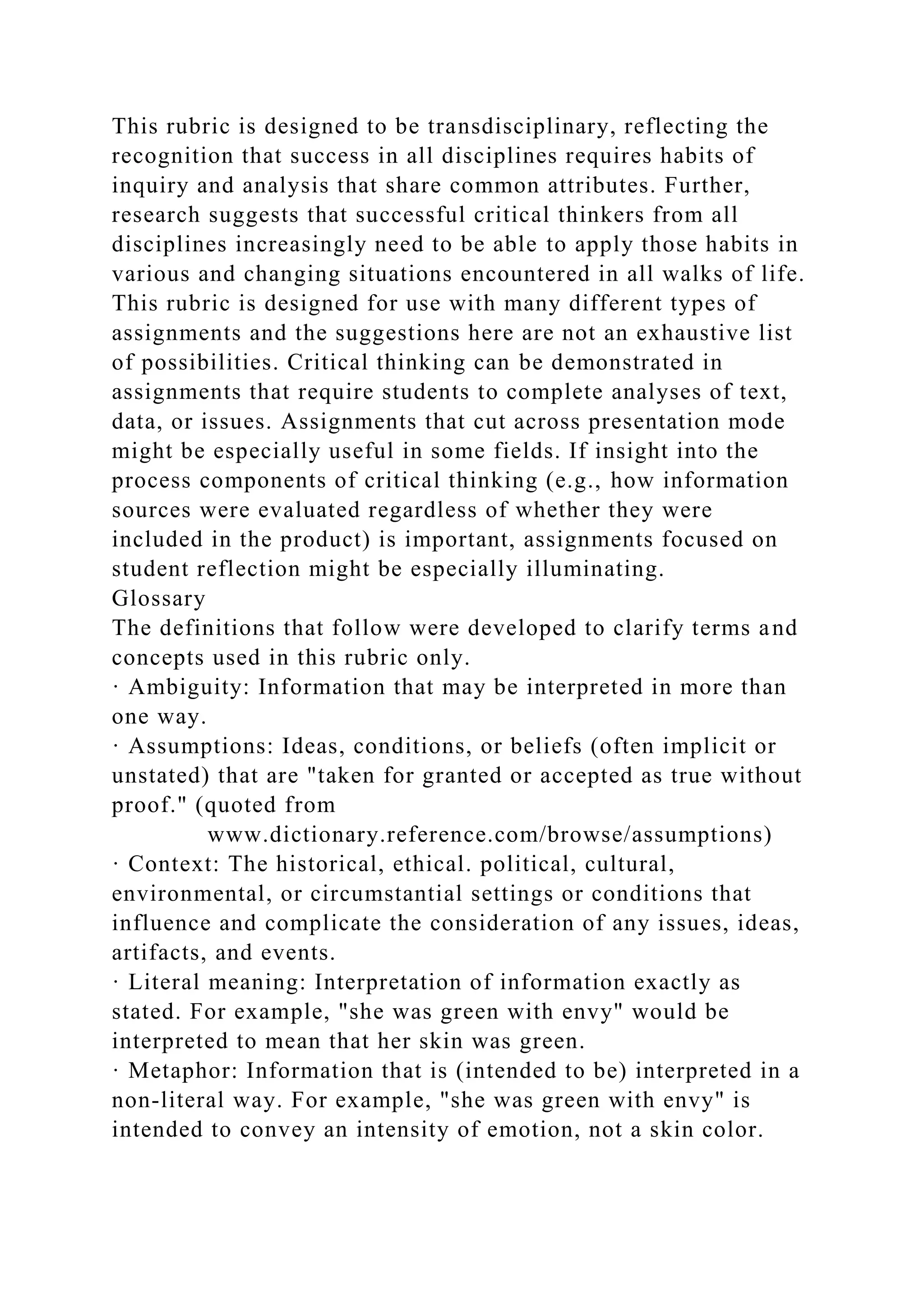
![CRITICAL THINKING VALUE RUBRIC
for more information, please contact [email protected]
Definition
Critical thinking is a habit of mind characterized by the
comprehensive exploration of issues, ideas, artifacts, and events
before accepting or formulating an opinion or conclusion.
Evaluators are encouraged to assign a zero to any work sample
or collection of work that does not meet benchmark (cell one)
level performance.
Capstone
4
Milestones
3 2
Benchmark
1
Explanation of issues
Issue/problem to be considered critically is stated clearly and
described comprehensively, delivering all relevant information
necessary for full understanding.
Issue/problem to be considered critically is stated, described,
and clarified so that understanding is not seriously impeded by
omissions.
Issue/problem to be considered critically is stated but
description leaves some terms undefined, ambiguities
unexplored, boundaries undetermined, and/or backgrounds
unknown.
Issue/problem to be considered critically is stated without
clarification or description.
Evidence
Selecting and using information to investigate a point of view
or conclusion
Information is taken from source(s) with enough](https://image.slidesharecdn.com/1000-1500wordargumentativeessaypromptisputtingyourse-221120065507-f10ffbac/75/1000-1500-word-argumentative-essay-PROMPT-Is-putting-yourse-docx-5-2048.jpg)
